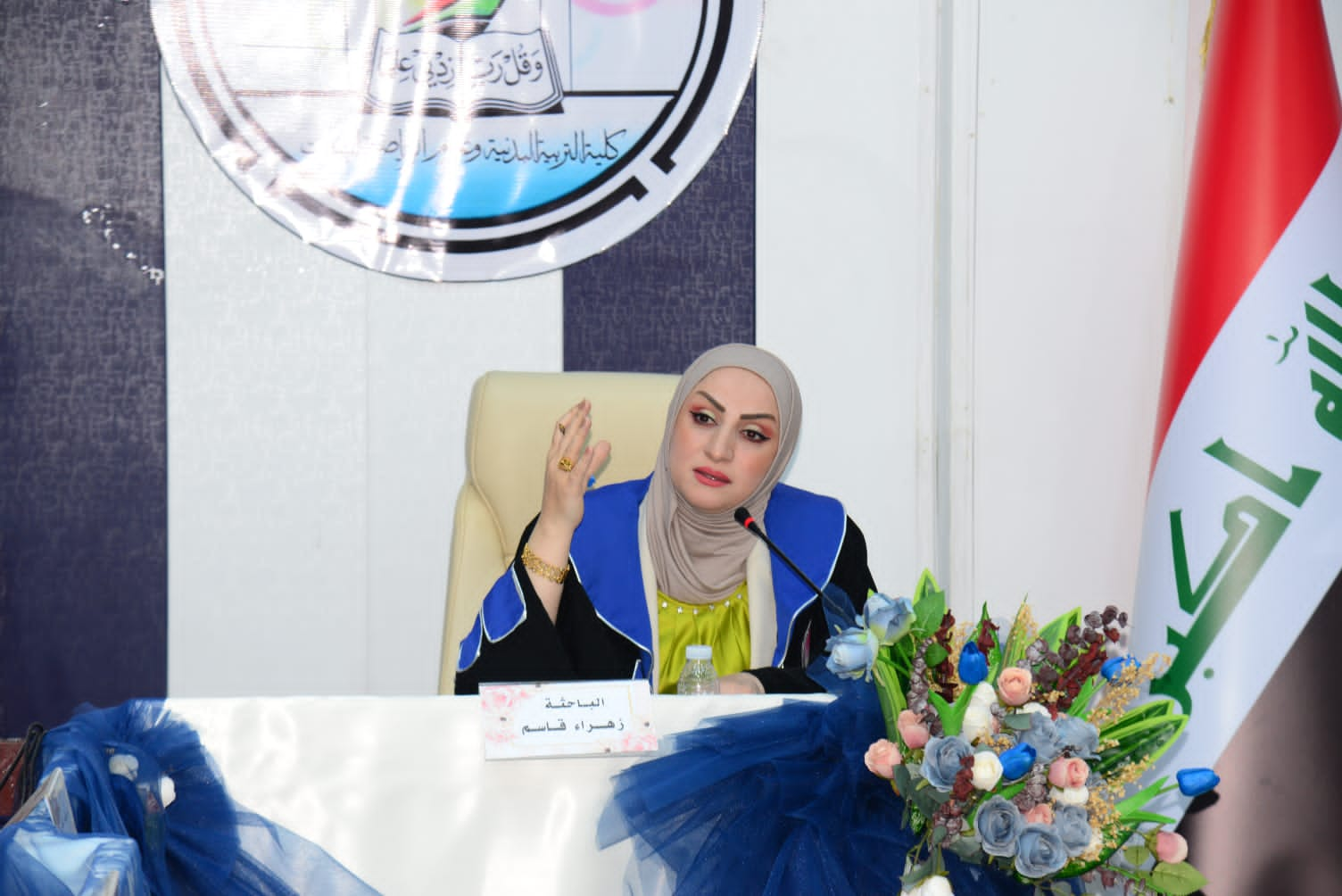The College of Physical Education and Sports Sciences for Girls at the University of Baghdad witnessed the defense of the master’s thesis titled “The Effect of Rehabilitation Exercises Using (Fit Light) Technology on Improving Brain Signals (EEG) and Some Physical Variables for Women Patients Affected by Temporary Hemiplegia at Ages (45-55) years” by the student (Zahraa Qasim Abdul-Khaliq), under the supervision of the Vice Dean for Academic Affairs and Graduate Studies, Prof. Dr. Suhad Haseeb Abdul-Hameed.
The study aimed to prepare rehabilitation exercises using (Fit Light) technology for those affected by temporary hemiplegia females aged 45-55 years. It also sought to investigate the effect of these exercises on improving brain signals (EEG) and some physical variables for the rehabilitation of those affected by temporary hemiplegia at ages 45-55 years.
The student concluded through her study that rehabilitation using (Fit Light) technology is suitable for women affected by temporary hemiplegia within the mentioned age range. It was found that they displayed a desire to continue treatment without interruption. Additionally, this technology helped increase the range of motion in the shoulder, hip, elbow, wrist, knee, and ankle joints. Moreover, it significantly improved overall balance capabilities and enhanced muscle strength, as evidenced by the (Jamar Smart Hand Dynamometer) device.
The researcher also recommended the adoption of measurement technology, such as the (Neurosky) device, to measure brain signals (EEG) when monitoring improvements in beta signals during the application of rehabilitative exercises for women suffering from temporary hemiplegia and the use of the (Jamar) Smart Hand Dynamometer to track the level of improvement in muscle strength. She emphasized not exaggerating the brightness level of the (Fit Light) technology lights in the rehabilitation environment and using them strategically to stimulate the brain through visual sense and create excitement for women affected by temporary hemiplegia.
Furthermore, the study recommended enhancing collaboration and communication between the Ministry of Higher Education and Scientific Research and the Ministry of Health to foster academic cooperation between specialists in sports rehabilitation and medical specialists, facilitating knowledge exchange and support. The study highlights the need for similar studies focusing on other age groups of women or males of different age groups who suffer from temporary hemiplegia resulting from a stroke.
After the student’s dissertation was discussed, the committee recommended awarding her a master’s degree in Physical Education.
